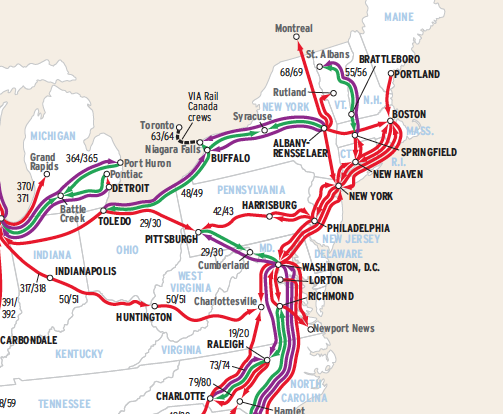
At the beginning of February 2006, the company had 56 active “T & E” (train and engine) crew bases at 53 locations, where conductors and engineers reported to work, ready to handle from 233 to 286 daily departures. (New York, Washington, and Harrisburg, Pa., have two districts originating from one base.) That year, Amtrak closed […]
Read More…
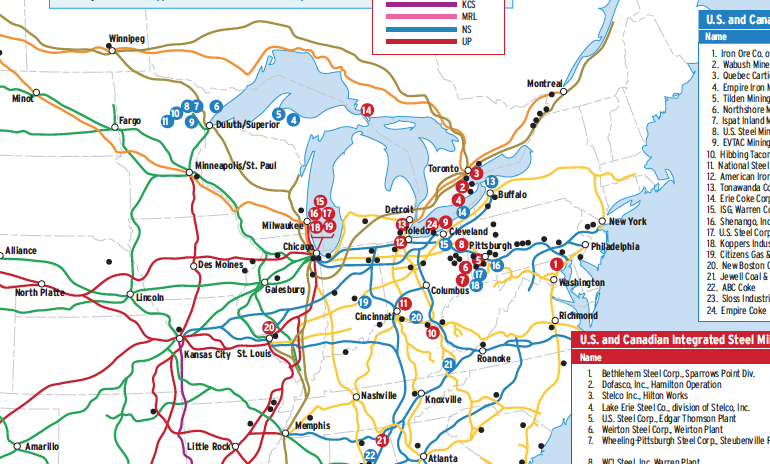
Mini-mills provided half of U.S. and Canadian steel-making capacity in 2001. Their decentralized geographic distribution mirrored U.S. population density (with the notable exception of California), and did not work to the benefit of railroads. The remaining integrated mills primarily sold high-quality sheet steel to auto and appliance factories. Railroads included in this map: BNSF Railway; […]
Read More…
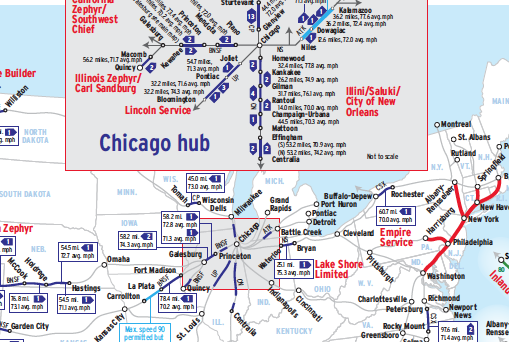
How many places in the United States can a railroad passenger travel more than 70 miles in one hour? This map spotlights those locations, based on the schedules in Amtrak’s Fall/Winter 2007 system timetable and its Spring 2008 Northeast Corridor timetable. (Where precise information was not available, the speeds factor in 1 minute of dwell […]
Read More…
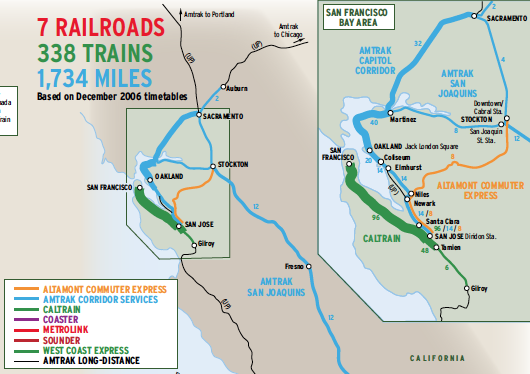
What you’re seeing here is a transformation that’s nothing short of remarkable. Twenty years ago, a map of West Coast short-haul passenger trains would’ve been little more than a blank page. Back then, Amtrak provided minimal service between Oakland and Bakersfield, Calif., and between Portland and Seattle, though it did field 14 San Diegans a […]
Read More…
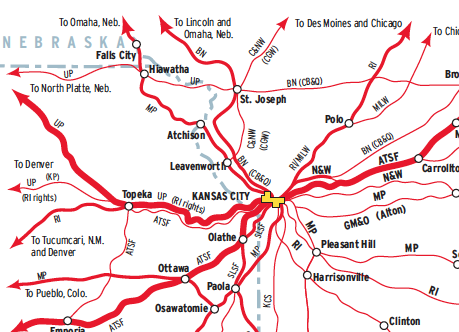
Chicago might have more trains, and St. Louis a big shiny arch, but Kansas City is the ton-mile king, with over 1 billion tons passing through the city (or above it, on flyovers) in 2003. That is 15 percent more tons than Chicago. What is remarkable about K.C. is its sheer growth, from 378 million […]
Read More…
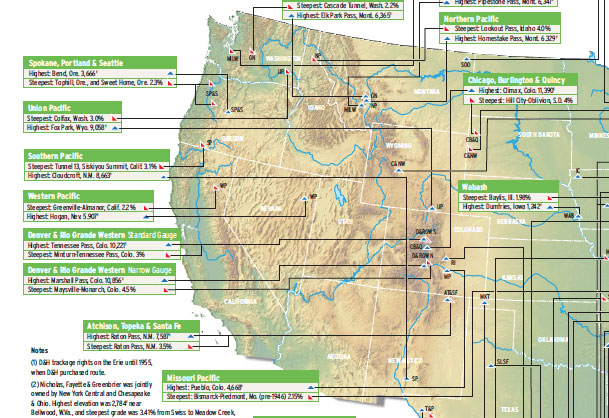
Railroad names: Georgia Railroad, Great Northern, Gulf, Mobile & Ohio, Illinois Central, Kansas City Southern, Lehigh Valley, Louisville & Nashville, Maine Central, Milwaukee Road, Missouri Pacific, Missouri-Kansas-Texas, Monon, Nashville, Chattanooga & St. Louis, New Haven, New York Central, New York, Ontario & Western, Nickel Plate, Norfolk & Western, Northern Pacific, Pennsylvania, Reading, Rock Island, Rutland, […]
Read More…
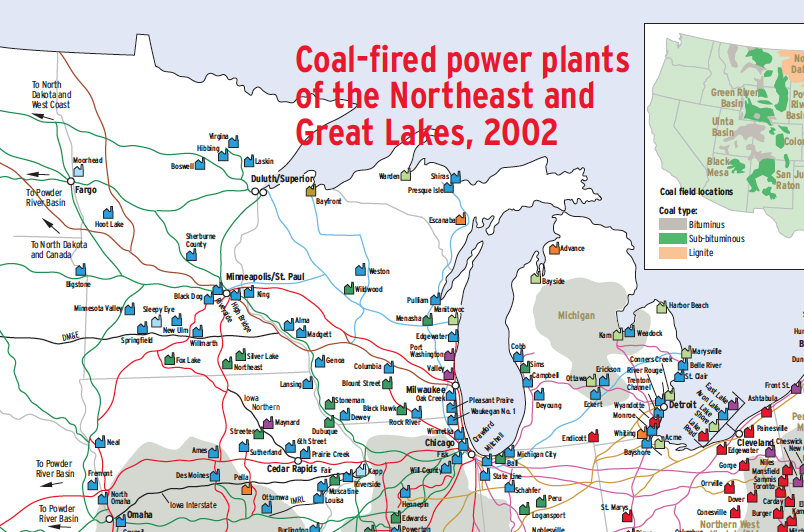
Coal is the most important rail commodity in the United States. In the early 2000s, when this map was produced, coal accounted for one of four cars loaded and slightly more than 20 percent of rail revenue. Eighty percent of the coal goes to the generation of electricity at steam power plants, so a map […]
Read More…
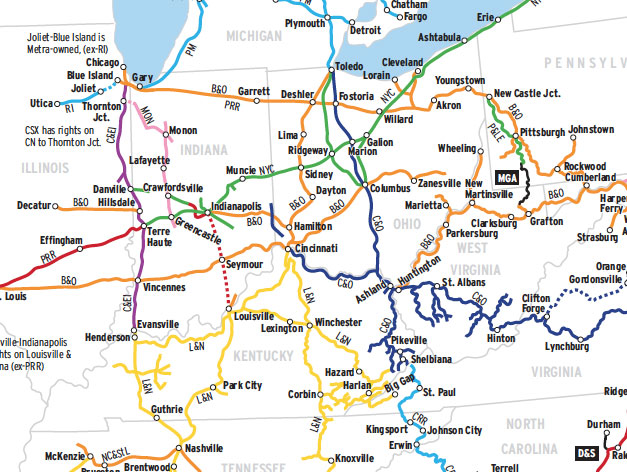
Geographic growth by acquisition or merger, and the elimination of redundant routes by sale or abandonment, are two factors that have been with American railroading from the outset…and are not about to go away. Consider this map of CSX Transportation’s principal ancestors. Shown here are 22 former Class I railroads — in post-World War II […]
Read More…
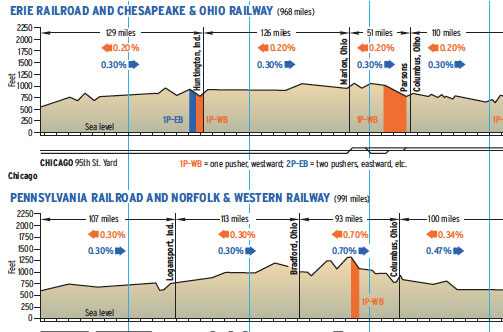
Compared here are the main lines of railroads that, for most of the 20th century, fed the nation with its most important natural resource: bituminous coal mined in Appalachia — the critical ingredient in power plants, steel mills, home furnaces, and factories. In 1927, the year of our comparison, the Chesapeake & Ohio and Norfolk […]
Read More…
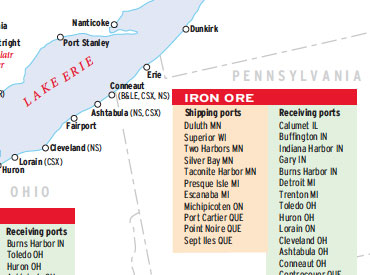
Commercial shipping on the Great Lakes follows a 2,300-mile corridor from the St. Lawrence Seaway to the western edge of Lake Superior. Over 200 million tons of cargo a year cross the five lakes and connecting waterways, hauled in some 150 U.S. and Canadian lakers, 50,000 barges, and about 1,000 visits by ocean-going vessels, or […]
Read More…

This Map of the Month was featured in the February 2009 issue of Trains magazine. The railroad Abraham Lincoln so ardently championed in the 1800s had changed dramatically in the ensuing century. On a mainly double-track speedway (enhanced with Automatic Train Stop in Illinois), diesel locomotives rushed goods from Gulf Coast ports and farms to […]
Read More…
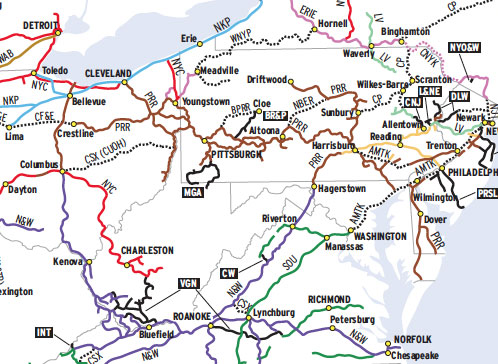
This Map of the Month appeared in the February 2004 issue of Trains magazine. Historians have argued that one key to the success of Norfolk & Western’s 1982 consolidation with Southern Railway was that the railroads shared a similar culture — determined, forward-looking, and committed to success. This served to douse the fires of early rivalries […]
Read More…












